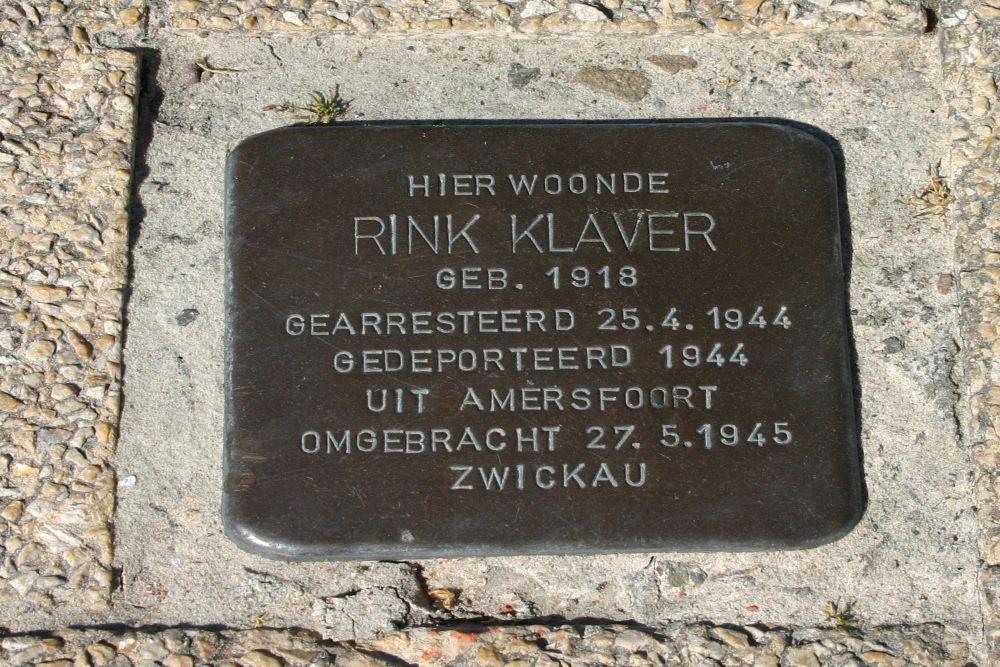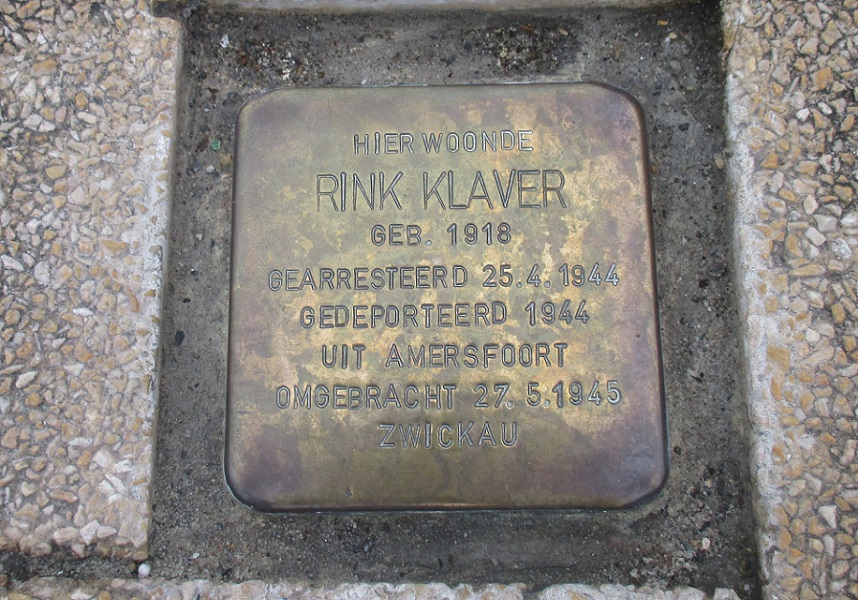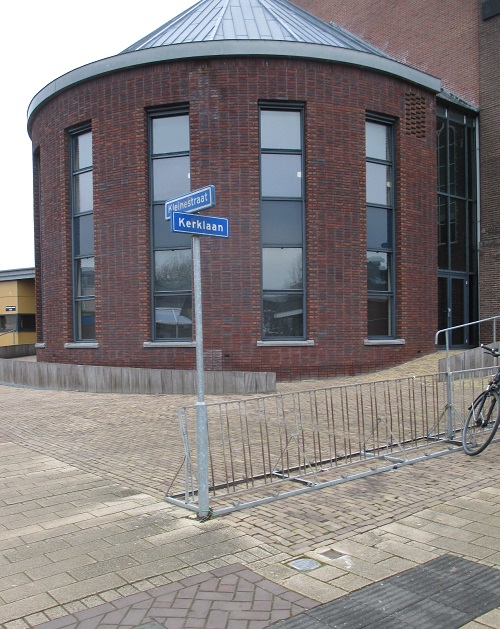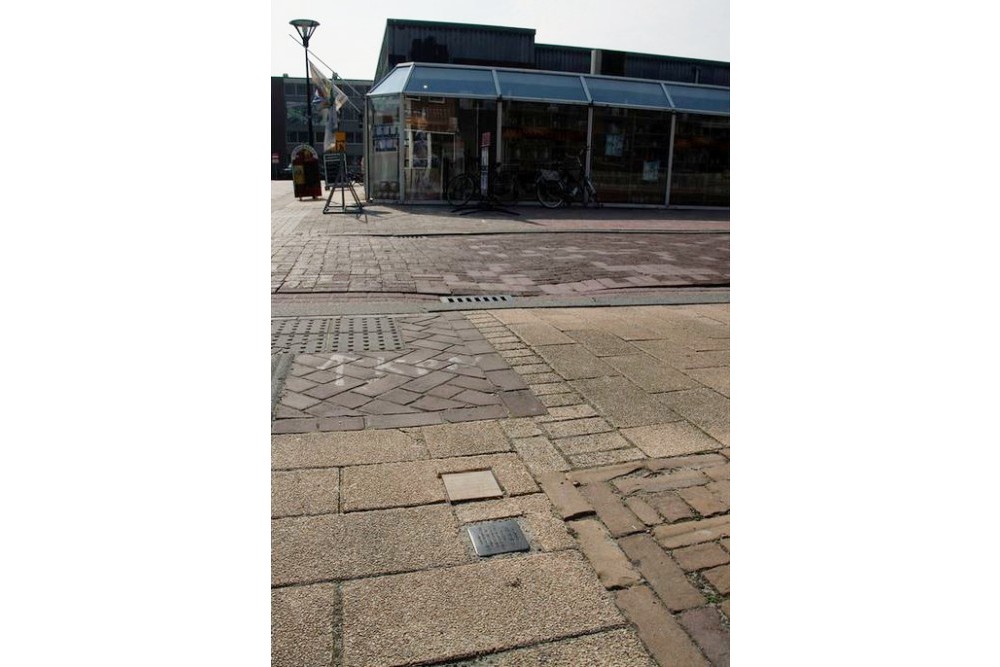Stumbling Stone Kerklaan 3 (now Kerklaan / Kerkplein)
This small, brass, memorial plaque (stolperstein or struikelsteen) commemorates:
* Rink Klaver, born 1918, arrested 25 April 1944, deported 1944 from Amersfoort, killed 27 May 1945, Zwickau.
Rink Klaver was born in Bedum. A farm worker, he married Gesina Hekkema, a maid, in May 1937. They had one child: daughter Grietje was born that same year.
On 25 April 1944, Rink Klaver was on his way to work when he was warned of a large Nazi raid in progress. He returned home, but he was arrested there by German soldiers and was deported the next day to Camp Amersfoort. In July, he and other prisoners were moved east to Germany. He was taken to Merseburg, a town north of the large IG Farben Leuna-Werke chemical and synthetic oil plant in Leuna. He may have been part of the slave labor force there.
The stolperstein shows Rink Klaver’s place of death at Zwickau. Other soures – including a document from 1946 in the Netherlands Open Archives -- show it as Zwenkau, north of Zwickau and on the outskirts of Leipzig.
Groningen 4045 cites Zwickau. The website (unfortunately without citing sources) gives a little more information on his life after being deported from Amersfoort. He was taken to the work camps at Schkopau, Lippenberg [other sources say Lippendorf], and Peres. According to Groningen 4045, Rink Klaver survived the 18 April liberation of the Alpenrose camp in Peres but not typhus. He died on 27 May 1945 in Zwickau. He was 27.
A photo of Rink Klaver can be seen here.
"Stolpersteine" is an art project for Europe by Gunter Demnig to commemorate victims of National Socialism (Nazism). Stolpersteine (stumbling stones) are small, 10x10cm brass plaques placed in the pavement in front of the last voluntary residence of (mostly Jewish) victims who were murdered by the Nazis. Each plaque is engraved with the victim’s name, date of birth, and place (mostly a concentration camp) and date of death. By doing this, Gunter Demnig gives an individual memorial to each victim. One stone, one name, one person. He cites the Talmud: "A human being is forgotten only when his or her name is forgotten."
Do you have more information about this location? Inform us!
Source
- Text: TracesOfWar.com
- Photos: Bert Deelman (1), Nico Nienhuis (2, 3), Suzanne Matrosov-Vruggink (4)
- Groninger Gijzelaars: Rink Klaver
- Open Archives Netherlands: Civil registration, Death of Rink Klaver
- Groningen 4045: Rink Klaver
Nearby
Museum
Point of interest
- Hiding Address Joseph and Regina Meijer - Bedum
- Plaque 'De Boog' - Winsum
- Bombardment Old Oostersluis Groningen - Groningen
Monument
- Memorial Bedum Town Hall - Bedum
- War Memorial Bedum - Bedum
- Memorial Raids Bedum April 25, 1944 - Bedum
Cemetery
- Dutch War Graves Bedum - Bedum
- Dutch War Graves Zuidwolde - Zuidwolde
- Dutch War Graves Old Cemetery Sauwerd - Sauwerd
Remembrance Stone
- Stumbling Stones Kerklaan 2 - Bedum
- Stumbling Stone Grotestraat 61 - Bedum
- Stumbling Stone Schoolstraat 8 - Bedum







